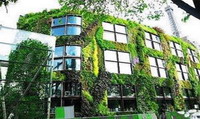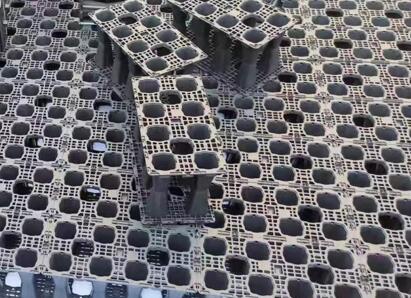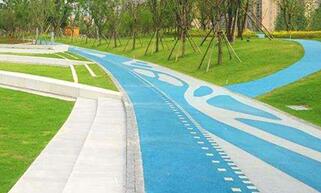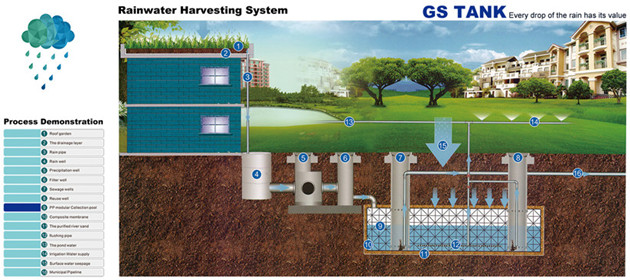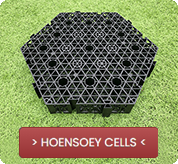Sponge Cities: Terminology, Applications, Development History, and Future Prospects in Different Countries
A sponge city is an emerging urban development concept aimed at absorbing, storing, purifying, and utilizing rainwater through natural and artificial means. This helps to alleviate urban flooding and improve the urban ecological environment. With the accelerating pace of global climate change and urbanization, the concept of sponge cities has gained widespread attention and application worldwide. However, different countries have different terminologies and development models for sponge cities. This article will explore the terminology, applications, development history, and future prospects of sponge cities in China, the United States, the United Kingdom, Germany, Singapore, Japan, and South Korea, along with relevant data comparisons.
- China
Terminology
In China, sponge cities are referred to as “Sponge City” (海绵城市).
Applications and Development History
China is one of the earliest countries to propose and implement the sponge city concept on a large scale. In 2013, the Chinese government set the goal of building sponge cities and launched the first batch of pilot projects in 2015, involving 30 cities, each receiving 400-600 million RMB in central financial support.
Key Measures
- Permeable Pavement: Use permeable materials for roads and squares.
- Green Roofs: Plant greenery on building roofs.
- Rain Gardens: Use plants and soil to purify and absorb rainwater.
Data Comparison
By 2020, the total area of sponge city pilot projects in China reached 4,500 square kilometers, with an annual runoff control rate of over 70%.
Future Prospects
China plans to expand sponge city construction to ensure that more than 70% of urban built-up areas have sponge city functions by 2030. The future will see increased policy support and technological innovation to further develop sponge cities.
- United States
Terminology
In the United States, the concept of sponge cities is commonly known as “Green Infrastructure” or “Low Impact Development” (LID).
Applications and Development History
The U.S. began addressing stormwater management in the 1990s, promoting green infrastructure through laws and policies. Major cities like Washington D.C., New York City, and Philadelphia have implemented extensive green infrastructure projects.
Key Measures
- Green Roofs: Plant greenery to reduce roof runoff.
- Rain Gardens: Plant rain-absorbing vegetation in gardens.
- Permeable Pavement: Use permeable materials for roads and parking lots.
Data Comparison
Philadelphia’s Green City, Clean Waters plan is set to invest $2.4 billion over 25 years, aiming to manage stormwater runoff and reduce 85% of combined sewer overflows.
Future Prospects
As climate change and urbanization continue, the demand for green infrastructure in the U.S. will grow. Future efforts will include increased policy and funding support to expand green infrastructure applications.
- United Kingdom
Terminology
In the UK, sponge cities are usually referred to as “Sustainable Urban Drainage Systems” (SUDS).
Applications and Development History
The UK introduced the SUDS concept in the 1990s to manage stormwater through natural processes. Cities like London and Manchester have implemented various SUDS projects.
Key Measures
- Wetlands: Use wetland plants to purify rainwater.
- Rain Gardens: Use plants and soil to absorb and filter rainwater.
- Green Roofs: Plant greenery on roofs to reduce rainwater runoff.
Data Comparison
According to the UK Environment Agency, London’s SUDS projects have reduced rainwater runoff by 30%, significantly mitigating urban flood risks.
Future Prospects
The UK will continue to promote SUDS to address flood risks posed by climate change. Government plans include legislative and policy support to further integrate SUDS technology into urban development.
- Germany
Terminology
In Germany, the sponge city concept is referred to as “Rainwater Management” (Regenwassermanagement) or “Ecological Rainwater Management” (Ökologisches Regenwassermanagement).
Applications and Development History
Germany has a long history of rainwater management. Since the 1990s, Germany has effectively managed urban rainwater runoff through rain gardens, green roofs, and infiltration systems.
Key Measures
- Green Roofs: Plant greenery on building roofs.
- Infiltration Systems: Use permeable materials to reduce surface runoff.
- Rainwater Collection Systems: Collect and store rainwater for non-potable uses.
Data Comparison
Hamburg’s rainwater management system reduces surface runoff by over 40% annually, effectively mitigating urban flood issues.
Future Prospects
Germany will continue to enhance research and application of rainwater management technologies, promoting urban ecological improvements. Future plans include policy incentives and technological innovation to further ecological rainwater management.
- Singapore
Terminology
In Singapore, the sponge city concept is known as “Active, Beautiful, Clean Waters” (ABC Waters).
Applications and Development History
Singapore has implemented the ABC Waters program since 2006 to comprehensively manage rainwater resources and improve urban water quality.
Key Measures
- Rainwater Collection Systems: Collect rainwater for irrigation and cleaning.
- Wetlands: Use artificial wetlands to purify rainwater.
- Bioretention Basins: Use plants and soil to purify rainwater.
Data Comparison
The ABC Waters program in Singapore covers over 200 square kilometers, reducing rainwater runoff by approximately 30% annually.
Future Prospects
Singapore plans to continue advancing the ABC Waters program, further enhancing urban water resource management. Future efforts will involve technological innovation and international cooperation to promote sustainable sponge city development.
- Japan
Terminology
In Japan, the sponge city concept is commonly referred to as “Rainwater Management” (雨水管理, Uchimizu) or “Integrated Rainwater Management.”
Applications and Development History
Japan has extensive experience in managing frequent typhoons and heavy rains. By implementing rainwater storage tanks, infiltration systems, and green infrastructure, Japan has effectively mitigated urban flood issues.
Key Measures
- Rainwater Storage Tanks: Store rainwater for non-potable uses.
- Infiltration Systems: Use permeable materials to reduce surface runoff.
- Green Infrastructure: Use plants and soil to absorb rainwater.
Data Comparison
Tokyo’s rainwater management system reduces rainwater runoff by over 20% annually, significantly lowering urban flood risks.
Future Prospects
Japan will continue to develop and apply rainwater management technologies to address climate change challenges. Government plans include policy support and technological innovation to further enhance urban flood prevention and ecological quality.
- South Korea
Terminology
In South Korea, the sponge city concept is known as “Rainwater Management System” or “Ecological Rainwater Management.”
Applications and Development History
South Korea has made significant progress in urban rainwater management in recent years. Cities like Seoul and Busan have effectively managed urban rainwater runoff through green roofs, rain gardens, and permeable pavements, improving the urban ecological environment.
Key Measures
- Green Roofs: Plant greenery on building roofs.
- Rain Gardens: Use plants and soil to absorb and filter rainwater.
- Permeable Pavement: Use permeable materials for roads and parking lots.
Data Comparison
Seoul’s rainwater management projects reduce rainwater runoff by approximately 25% annually, significantly improving urban flood issues.
Future Prospects
South Korea plans to continue strengthening research and application of rainwater management systems, promoting sustainable urban ecological development. Future efforts will include policy support and international cooperation to further enhance urban rainwater management.
Conclusion
As an emerging urban development concept, sponge cities have gained widespread attention and application worldwide. Although different countries have varying terminologies and development models, their core goal is consistent: to comprehensively manage rainwater resources and improve urban ecological quality. In the future, with technological advancement and deepening international cooperation, sponge cities will have broader development prospects. Countries should strengthen exchange and cooperation to promote the sustainable development of sponge cities.
Appendix: Key Data Comparison of Sponge City Projects in Various Countries
| Country | Terminology | Project Coverage Area (sq km) | Runoff Reduction Rate | Key Measures | Future Plans |
| China | Sponge City | 4,500 | 70% | Permeable pavement, green roofs, rain gardens | By 2030, 70% of urban built-up areas to have sponge functions |
| United States | Green Infrastructure, LID | N/A | 85% (Philadelphia) | Green roofs, rain gardens, permeable pavement | Increase policy and funding support, expand applications |
| United Kingdom | Sustainable Urban Drainage Systems | N/A | 30% (London) | Wetlands, rain gardens, green roofs | Promote SUDS technology in urban development |
| Germany | Rainwater Management | N/A | 40% (Hamburg) | Green roofs, infiltration systems, rainwater collection systems | Enhance research and application, promote ecological rainwater management |
| Singapore | ABC Waters | 200 | 30% | Rainwater collection systems, wetlands, bioretention basins | Continue ABC Waters program, enhance management |
| Japan | Rainwater Management, Uchimizu | N/A | 20% (Tokyo) | Rainwater storage tanks, infiltration systems, green infrastructure | Develop and apply rainwater management technologies |
| South Korea | Rainwater Management System | N/A | 25% (Seoul) | Green roofs, rain gardens, permeable pavement | Strengthen research and application, promote sustainable development |
Tags
Sponge City, Green Infrastructure, Sustainable Urban Drainage Systems, Rainwater Management, Urban Development, Climate Change, Ecological Urban Planning






